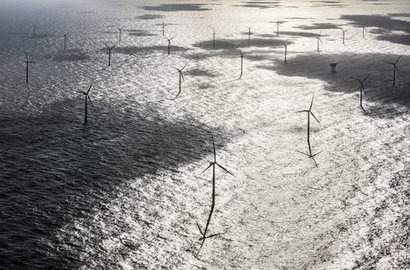
The offshore wind farm consists of 78 Siemens wind turbines, each with a capacity of 3.6 MW and a rotor diameter of 120 meters. The facility was developed and constructed by DONG Energy which owns 50 percent with the investors Kirkbi Invest A/S and William Demant Invest A/S owning the remaining 50 percent. Siemens is providing service and maintenance for the turbines for an initial period of 10 years.
It is the sixth offshore wind project to be handed over by Siemens in this fiscal year with the total capacity of all these projects representing enough electricity to supply nearly 2 million German households. Dan Tysk (288 MW) was officially commissioned at the end of April and Gwynt y Môr (576 MW) and Westermost Rough (210 MW) followed in June. September also saw the official inauguration of the Butendiek (288 MW) wind farm in the German North Sea and EnBW Baltic 2 (288 MW) project in the German Baltic Sea.
“Installation of our offshore projects in Europe is continuing at full speed” said Michael Hannibal, Offshore CEO of Siemens Wind Power and Renewables Division. “Siemens has already erected an offshore capacity of more than 5.8 gigawatts, with two gigawatts going online in the last fiscal year alone. We are making considerable progress in the industrialization of offshore wind power. Our goal is to drive power generating costs from offshore wind down below 10 euro-cents per kilowatt-hour by 2020.”
Siemens is currently working on a strategy to help reduce the cost of power from these facilities. In April this year the company presented the prototype of an offshore wind turbine with a capacity of 7 MW, nearly ten percent more energy yield under high-seas conditions. The new production facilities for the 7 MW class in Hull, UK, and Cuxhaven, Germany, will also contribute to reducing costs. Siemens is also banking on the continued innovation of its vital grid connections with smaller grid connection solutions utilising AC technology potentially replacing the high-voltage AC transformer platforms used thus far. This should achieve considerable savings in terms of both space and weight, thereby reducing costs substantially.
Siemens has also launched two new Service Operation Vessels (SOVs) at the end of June 2015. ESVAGT Froude has taken up service in the EnBW Baltic 2 wind power plant while the ESVAGT Faraday is providing service to the Butendiek offshore wind project. Both types of these special vessels form part of the logistics infrastructure ensuring more efficient maintenance operations and thereby significantly benefiting the availability of far shore wind turbines. Other three charter agreements for SOVs have already been signed for the Dutch project Gemini and the German offshore wind power plants Sandbank/Dan Tysk and Veja Mate.
For additional information:

